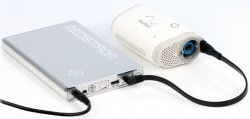I snore and know I can’t sleep on my back, but are fine on my side - I’m not tired. I’ve been hesitant to investigate as I hold a heavy vehicle licence and have heard stories of licences being suspended until diagnosis has be finalised.
Anyone care to expand on the diagnosis process? I presume you can’t just purchase a machine?
The process varies, however you start with your GP. Snoring is one thing, but what is key to find out is if you are 'obstructing'. So have your significant other listen to your snore and see if you have periods where you stop breathing, or have difficulty breathing - often indicated by a stuttered snore. What I'm about to write is a general guide to what the contemporary practice is, but some doctors may do things differently.
So your GP will send you to a sleep specialist. They'll have a chat to you and see if you feel tired or have found your sleep quality lacking. They may have a bit of a look via a laryngoscope to see if you have inflammation. If they feel it is necessary they will send you for a sleep study.
The study is done in the home, however you will be wired up at some clinic earlier in the afternoon. They dot your head and body with electrodes, slip a pulse oximeter to your finger, and stick a couple of small devices near your nose and mouth to measure breathing and to record your snoring. You then toodle home and have promptly the worst sleep you have every had because all the gear stuck to you is annoying. The next day you will pull everything off and hand it all back to your tech.
As a side note: I managed three hours sleep, then went on to have a job interview the next morning for a job in a major tertiary ICU - which I got. So don't worry. It won't ruin your life the day after.
A couple of weeks later you hook up with the same specialist again, who sticks your data that's on a USB into a computer in his office and shows all the times you stopped breathing in the night as well as the periods of snoring you experienced.
If the decision is you need CPAP, they will organise a visit to a CPAP tech who will organise a 1 month trial. The doctor will produce a 'prescription' which tells the tech what has been happening, and they fit you with a machine and a suitable mask or nasal cushionthat you rent for a month - or maybe more. This machine, usually an 'APAP' (Automatic) will probably be fitted with a modem which sends the data back to your specialist to analyse. They will also give you a few hints on how to handle the hardest part: sleeping with that thing from alien attached to your face. At may be disheartening to know, but it takes about a year to get used to the cushion or the mask.
They use APAPs for a good reason. While the prescription will define a approximation of what pressure you will need, an APAP assess constantly if you are obstructing or not, and raises the pressure until it stops. After a while your machine will show an average pressure that you will need.
At this point things can diverge a bit depending on where you get advice.
So the idea is to go back to your specialist where they talk about how you are doing on CPAP. The continuation failure rate at this stage is about 50%. If all is doing okay they then organise you to continue a rental plan with your equipment provider, suggesting as you get used to it you may wish to buy your own machine. Buying in Australia however is expensive. Make sure you have good health. Specialists prefer you do this because they like to keep the monitoring services going, and also your machine is set up to your 'prescription'. This is especially important if you chose to do the 'CPAP' route, instead of using an 'APAP'. CPAP machines are cheaper as they just need to be set to one pressure. Your specialist will advise on what is best, but if you have the APAP route as an option, most will go for it.
However...
CPAP/APAP machines are much cheaper in the USA where the market is stronger. This is where things get blurry as many Australians will buy their machines from there. Your specialist or your tech will not support this or offer you much to assist you. So you'll need to get the machine set up yourself, which will be a bit of a steep learning curve. Also many American providers don't sell without a prescription directly from your doctor.
So yes, you can buy them. But you really need to have some indication from a specialist at first on what you are doing, what kind you need, or if you even need it at all.
















